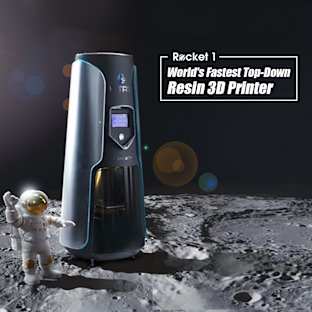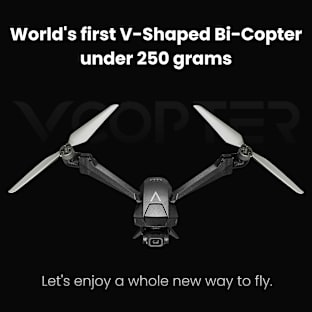![]()
If you get sick, is it from the water you drank? The food you ate? Did you catch something from your neighbor? To know what’s going on in your life you must get a better look inside yourself but also know what’s going on around you. Just imagine what life would be like if you could avoid getting sick, or diagnose disease before it made you sick.....
We are the Distributed Health Labs, based at the Qualcomm Institute, which is the UC San Diego division of the California Institute for Telecommunications and Information Technology. Our mission is to enable OASIS, the most powerful sensor network on the planet.
Together, devices, connected users and machine intelligence create a "crowd-doctor", which gets smarter and better the more people use it. OASIS will empower citizens (YOU) to sense more about your health and environment, producing data that can be shared on a living map of the things that matter to us all.
How It Works
![]()
1. A sensor measures your vitals just by touching you. Another sensor analyzes liquids, such as water or blood, for things that shouldn’t be there.
2. The data goes to your smartphone, which displays measurements and provides a diagnosis.
3. Certain kinds of data can be shared, helping the system get better at creating a living map for our health. This data gets fed back to you to make your OASIS device work better and give you practical health information.
Through low-cost sensors, OASIS lets us monitor the aspects of our health and surroundings that we cannot see. By keeping costs down and building an open yet highly secure 'cloud' platform, we can connect the data from these sensors in ways that preserves users privacy but allows us to better determine illness or environmental threats at home and around the globe.
![]()
We’ve built prototype optical and electrochemical sensors that are almost ready for the field. Our vitals monitor is nearly complete and ready for calibration. When ready it will measure temperature, heart rate, pulse oxygen, breathing and maybe even blood pressure. The key to making this really work will be calibration in the field, by our users.
![]()
Our electrochemical sensors will first be used to identify heavy metals in water, but updated test-strips will detect nearly any type of communicable or medical disease. We will be calibrating and evolving our technology through crowd sourcing the data collection to you.
Why both health and environment? Simple. Our personal health is inextricably linked to our environment AND we can measure both with the same technology! Download my.Oasis, our beta-app for reporting pollution and diseases on the Apple App Store. we’ll be updating the app for health soon.
It is our goal to enable a network of 1,000,000 citizen-sensors by 2017, starting with 1,000 devices and 10,000 apps deployed by 2015.
This campaign is the driving force behind what will get us there. We want YOU to enable one of those sensors. That's why we've turned to Indiegogo and you. Read more about our work, and we hope you'll support at whichever level you can!
We Need Your Support
We need your help to finish building and deploying the Open Health Stack, the infrastructure necessary to make OASIS possible. We are close to finishing our SENSE prototypes but we need money to help manufacture and distribute these devices in Mongolia, Mozambique, Mexico, Haiti and the U.S. There are several ways you can help:
- Please make a tax-deductible donation!
- Help us share our campaign on Facebook and Twitter
- Tell all your friends!
We have turned to the crowd because "citizen sensing" depends on a community of users, and with your support we can get the critically needed resources to complete our sensors and expand our user community at the same time.
WE HOPE YOU WILL JOIN OUR CITIZEN SENSOR NETWORK!!!
NOTE: Building any kind of hardware sensor is difficult work. We want to make it clear that the device you are receiving from our campaign is a prototype and not what many would consider a polished, finished product. Keep in mind that we are university research laboratory, not a for-profit business. However, we promise that any prototypes we ship will be functional, making you part of a global citizen sensing network!
Read More about our project and technologies..........
Open Tech
We call our tech the “Open Health Stack” a collection of open and inexpensive tools to diagnose, report and visualize health and environmental disease around the world. The driving force behind our stack is SENSE.
![]()
[SENSE: A low-cost Tricorder for the globe. SENSE is like the medical “tricorder” from Star Trek, a futuristic health monitor. Ours contains two components. The optical and electronic sensor array lets you measure vital data such as temperature, heart rate and oxygen levels. The electrochemical sensor (potentiostat) works with cheap, glucometer-like, disposable strips to measure environmental pollutants, human and even animal diseases.
The technology behind our devices is tried and true; we’re just making it cheaper, better and putting it together so anyone can use it. While components of our tech are already available in some places, due to cost and proprietary technologies they are often ill suited for global deployment or use in resource-limited settings. With SENSE we are trying to remove this bottleneck by designing open-source, low-cost vitals and electrochemical sensors that excel in both environmental and biological sample testing.
The Global Tricorder: Our Future
Here at the Distributed Health Labs, we truly believe that the work we are doing will help transform health and medicine around the world, and we know that we aren't the only ones who feel this way. That's why we've joined the $10 million Qualcomm Tricorder XPRIZE, a global competition, funded by the Qualcomm Foundation, to offer the first reliable and understandable diagnosis of 15 common health conditions plus real-time monitoring of five key vital signs. By utilizing low-cost diagnostic devices in conjunction with the ubiquity of cell phones and wireless networks, we hope to create a globally connected tricorder that empowers local communities. We are proud to be a part of such a landmark competition alongside other incredible groups vying for the prize.
![]()
OASIS Mongolia: First steps in the environment
![]()
Individual sensing is only one half of OASIS. The other is sharing data to create global insights. By sharing data, we can extrapolate from hyper-local information from thousands of users to pinpoint sweeping trends across cities and countries. We'll be able to create real-time "living maps" of the issues that matter most to us.
Starting in Mongolia. While some hazards are easy to see (e.g. fire, smoke), others are not. Heavy metals such as lead, mercury, and arsenic can enter our lives in invisible ways, through our drinking water or the soil where food is grown. The devastation these metals cause to our personal health can be insidious, but there are things we can do about this -- provided we can see the problem. Mongolia is home to the last horse-based nomadic culture in the world, where almost half of the population lives a traditional nomadic lifestyle. The vast stretch of prairies, pristine rivers, and lakes that are the key to nomadic existence also hold immense natural deposits of gold, copper, coal, uranium, and other industrial minerals. Thus the country has witnessed the birth of an internationally driven and highly aggressive mining sector. Much of this activity goes unregulated, and unsustainable mining practices have caused river and ground systems to be polluted with invisible but toxic heavy metals and mining waste products.
![]()
OASIS Mongolia aims to empower nomadic communities by providing a low cost, community-based testing system for lead, mercury, cyanide, uranium and arsenic in ground drinking water. Nomads will be able to use existing cellular networks in Mongolia to send and receive results on their cell-phones along with information regarding nearby clean-water sources. Through this ecosystem we hope to crowdsource a living map of water pollution "hotspots" enabling citizen-powered environmental monitoring. OASIS-Mongolia will serve as the launchpad for a global OASIS Project built with citizen-sensors like you. Who We AreDistributed Health Labs is based at UC San Diego's Qualcomm Institute. We are a passionate, multidisciplinary team that is united in its determination to usher in a new age of technology-enabled global health. We are guided by the belief that by leveraging inexpensive sensors and digital connectivity, together we can change the global health equation – be it individual, community, or environmental health. Our mission is to create an open community of innovators and adopters to make that happen.
![Albert Lin Distributed Health Lab-5]()
News Links:
Fast Company Coverage
National Geographic Newswatch Blog
![]()



























































